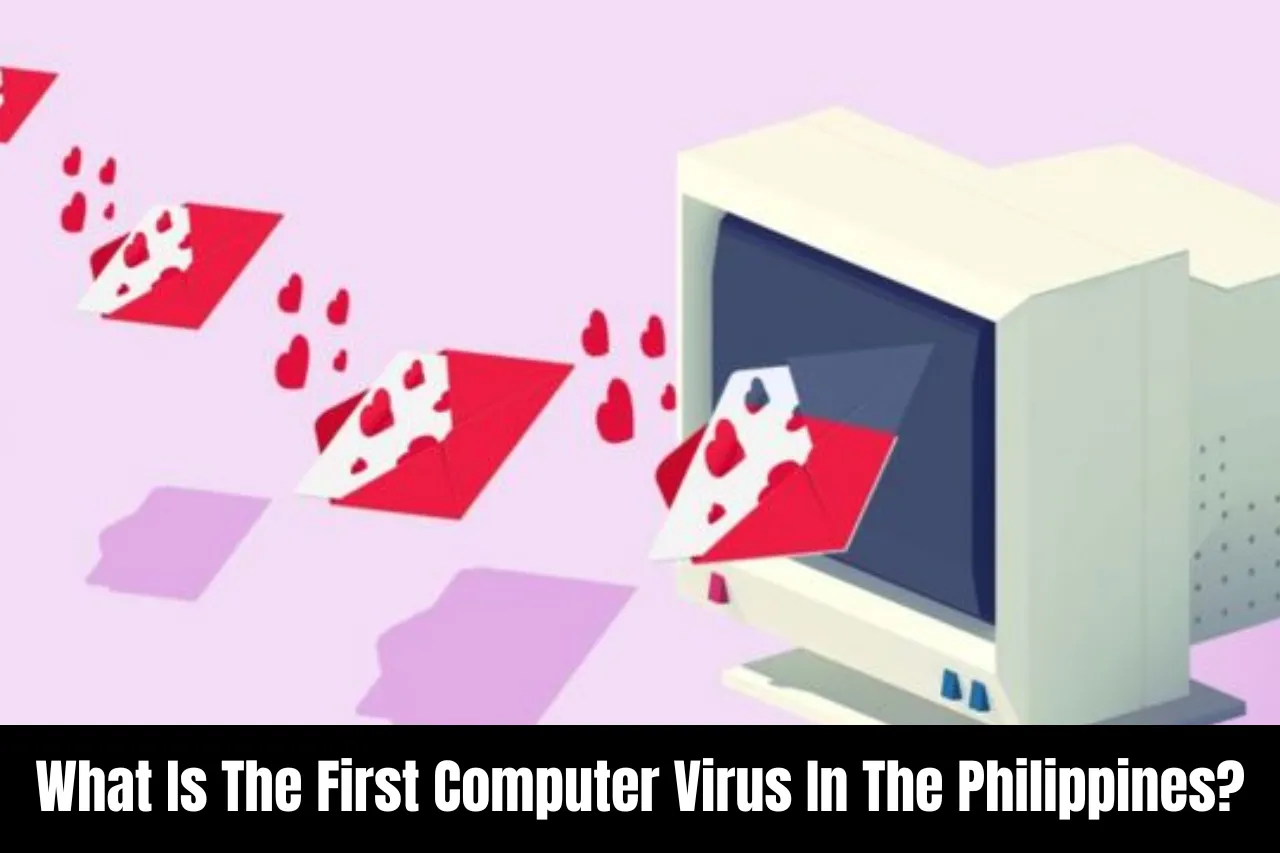The Origin Of The Philippines' First Virus: A Historical Perspective
What is the first Philippines virus? The first virus isolated and identified in the Philippines was the dengue virus.
Dengue virus is a mosquito-borne virus that can cause dengue fever, a painful and potentially fatal illness. The virus was first isolated in the Philippines in 1956, and it has since become one of the most common mosquito-borne viruses in the world.
Dengue fever is a major public health problem in the Philippines, with an estimated 200,000 cases reported each year. The virus is transmitted through the bite of an infected Aedes mosquito, and it can cause a wide range of symptoms, including fever, headache, muscle and joint pain, nausea, vomiting, and abdominal pain. In severe cases, dengue fever can lead to hemorrhagic fever and shock, which can be fatal.
There is no specific treatment for dengue fever, but supportive care can help to relieve symptoms and prevent complications. The best way to prevent dengue fever is to avoid mosquito bites, and to use mosquito repellents and insecticide-treated bed nets.
What is the first Philippines virus?
The first virus isolated and identified in the Philippines was the dengue virus, a mosquito-borne virus that causes dengue fever.
- First isolated: 1956
- Vector: Aedes mosquito
- Symptoms: Fever, headache, muscle and joint pain, nausea, vomiting, abdominal pain
- Treatment: Supportive care
- Prevention: Avoid mosquito bites, use mosquito repellents and insecticide-treated bed nets
- Public health problem: Dengue fever is a major public health problem in the Philippines, with an estimated 200,000 cases reported each year.
Dengue fever is a painful and potentially fatal illness, but it can be prevented by avoiding mosquito bites. If you are experiencing symptoms of dengue fever, it is important to seek medical attention immediately.
First isolated
The dengue virus was first isolated and identified in the Philippines in 1956. This was a significant event in the history of virology, as it was the first time that a virus had been isolated from a human in the Philippines. The isolation of the dengue virus led to the development of diagnostic tests and vaccines, which have helped to reduce the incidence of dengue fever in the Philippines and around the world.
The isolation of the dengue virus in 1956 was also important because it helped to establish the Philippines as a center for virology research. The Philippines has since become a leader in the field of virology, and Filipino scientists have made significant contributions to our understanding of viruses and viral diseases.
The isolation of the dengue virus in 1956 is a reminder of the importance of basic research. Basic research is the foundation of all medical advances, and it is essential for us to continue to invest in this type of research if we want to continue to make progress against viruses and other diseases.
Vector
The dengue virus is transmitted through the bite of an infected Aedes mosquito. Aedes mosquitoes are found in tropical and subtropical regions around the world, and they are responsible for transmitting a number of other viruses, including Zika virus, chikungunya virus, and yellow fever virus.
- How Aedes mosquitoes transmit viruses: When an Aedes mosquito bites an infected person, it ingests the virus. The virus then replicates in the mosquito's salivary glands, and when the mosquito bites another person, it can transmit the virus to that person.
- Why Aedes mosquitoes are effective vectors: Aedes mosquitoes are effective vectors of viruses because they are able to transmit viruses from person to person without becoming infected themselves. They also bite humans frequently, and they are able to survive in a variety of environments.
- Control of Aedes mosquitoes: The best way to control Aedes mosquitoes is to reduce the number of breeding sites available to them. This can be done by eliminating standing water around homes and businesses, and by using mosquito repellents and insecticide-treated bed nets.
Aedes mosquitoes are a major public health concern, and they are responsible for transmitting a number of serious viruses. By understanding how Aedes mosquitoes transmit viruses, we can develop more effective strategies to control them and prevent the spread of these viruses.
Symptoms
The symptoms of the first Philippines virus, dengue fever, can vary depending on the severity of the infection. Mild cases may only cause a few days of fever, headache, and muscle pain. More severe cases can cause more serious symptoms, such as nausea, vomiting, abdominal pain, and bleeding. In severe cases, dengue fever can be fatal.
It is important to be aware of the symptoms of dengue fever so that you can seek medical attention if you think you may have been infected. Early diagnosis and treatment can help to prevent serious complications.
Treatment
There is no specific treatment for dengue fever, the first Philippines virus, but supportive care can help to relieve symptoms and prevent complications. Supportive care includes:
- Rest
- Plenty of fluids
- Over-the-counter pain relievers
- Anti-nausea medication
- Hospitalization may be necessary in severe cases
Supportive care is important because it can help to prevent serious complications of dengue fever, such as dehydration, electrolyte imbalance, and bleeding. Supportive care can also help to reduce the duration of symptoms and improve the quality of life for people with dengue fever.
If you think you may have dengue fever, it is important to seek medical attention immediately. Early diagnosis and treatment can help to prevent serious complications.
Prevention
The first Philippines virus, dengue fever, is transmitted through the bite of an infected Aedes mosquito. Therefore, the most effective way to prevent dengue fever is to avoid mosquito bites. This can be done by taking the following steps:
- Avoid mosquito bites: Avoid being outdoors during peak mosquito hours (dawn and dusk), and wear long sleeves and pants when you are outdoors.
- Use mosquito repellents: Use mosquito repellents that contain DEET, picaridin, or IR3535. Reapply mosquito repellent according to the manufacturer's instructions.
- Use insecticide-treated bed nets: Sleep under an insecticide-treated bed net every night, even if you are not sleeping in an air-conditioned room.
These preventive measures are essential for reducing your risk of dengue fever. Dengue fever is a serious illness that can cause severe complications, including death. By taking these steps to prevent mosquito bites, you can protect yourself and your loved ones from this potentially fatal disease.
In addition to the above measures, it is also important to reduce the number of breeding sites for mosquitoes around your home. This can be done by eliminating standing water, such as in birdbaths, flower pots, and clogged gutters.
By taking these steps to prevent mosquito bites and reduce mosquito breeding sites, you can help to control the spread of dengue fever and other mosquito-borne diseases.
Public health problem
The first Philippines virus, dengue fever, is a major public health problem in the country. Dengue fever is a mosquito-borne viral infection that can cause a wide range of symptoms, from mild fever to severe, life-threatening illness. The virus is transmitted through the bite of an infected Aedes mosquito, and it is estimated that there are over 200,000 cases of dengue fever reported in the Philippines each year.
- High incidence of dengue fever: The Philippines has one of the highest incidences of dengue fever in the world. This is due to a number of factors, including the country's tropical climate, which is ideal for the breeding of mosquitoes, and the high population density, which increases the risk of contact between humans and mosquitoes.
- Lack of access to healthcare: Many people in the Philippines do not have access to adequate healthcare, which can make it difficult for them to get diagnosed and treated for dengue fever. This can lead to serious complications, including death.
- Economic burden: Dengue fever can also have a significant economic impact on the Philippines. The cost of treating dengue fever can be high, and the illness can also lead to lost productivity and income.
The high incidence of dengue fever in the Philippines is a serious public health problem. The government is working to control the spread of the virus, but more needs to be done to prevent and treat dengue fever. Increasing access to healthcare, providing education about dengue fever, and developing new vaccines and treatments are all important steps that need to be taken to address this problem.
FAQs on the First Philippines Virus
The following are frequently asked questions about the first Philippines virus, dengue fever:
Question 1: What is dengue fever?
Answer: Dengue fever is a mosquito-borne viral infection that can cause a wide range of symptoms, from mild fever to severe, life-threatening illness.
Question 2: How is dengue fever transmitted?
Answer: Dengue fever is transmitted through the bite of an infected Aedes mosquito.
Question 3: What are the symptoms of dengue fever?
Answer: The symptoms of dengue fever can vary depending on the severity of the infection. Mild cases may only cause a few days of fever, headache, and muscle pain. More severe cases can cause more serious symptoms, such as nausea, vomiting, abdominal pain, and bleeding.
Question 4: How is dengue fever treated?
Answer: There is no specific treatment for dengue fever, but supportive care can help to relieve symptoms and prevent complications.
Question 5: How can dengue fever be prevented?
Answer: The most effective way to prevent dengue fever is to avoid mosquito bites. This can be done by taking the following steps:
- Avoid being outdoors during peak mosquito hours (dawn and dusk).
- Wear long sleeves and pants when you are outdoors.
- Use mosquito repellents that contain DEET, picaridin, or IR3535.
- Use insecticide-treated bed nets.
Question 6: What is the outlook for people with dengue fever?
Answer: The outlook for people with dengue fever depends on the severity of the infection. Most people recover from dengue fever within a few weeks. However, severe cases of dengue fever can be fatal.
Summary: Dengue fever is a serious public health problem in the Philippines. The best way to prevent dengue fever is to avoid mosquito bites. If you think you may have dengue fever, it is important to seek medical attention immediately.
Transition to the next article section: For more information on dengue fever, please visit the website of the World Health Organization.
Conclusion
The first Philippines virus, dengue fever, is a serious public health problem in the country. The virus is transmitted through the bite of an infected mosquito, and it can cause a wide range of symptoms, from mild fever to severe, life-threatening illness. There is no specific treatment for dengue fever, but supportive care can help to relieve symptoms and prevent complications.
The best way to prevent dengue fever is to avoid mosquito bites. This can be done by taking a number of steps, including using mosquito repellents, wearing long sleeves and pants when outdoors, and using insecticide-treated bed nets. The government is also working to control the spread of dengue fever, but more needs to be done to prevent and treat this disease. Increasing access to healthcare, providing education about dengue fever, and developing new vaccines and treatments are all important steps that need to be taken.



Detail Author:
- Name : Miss Mozelle Wilkinson
- Username : jake49
- Email : skemmer@yahoo.com
- Birthdate : 1978-01-01
- Address : 761 Brannon Lodge New Lila, IA 41147
- Phone : 425.286.7174
- Company : Stanton, Renner and Hilpert
- Job : Fashion Model
- Bio : Omnis enim tenetur eaque vero. Et ut animi molestias quaerat reprehenderit nulla magnam blanditiis. Id dolorem ullam quos nemo. Aut consectetur nulla debitis eligendi architecto.
Socials
twitter:
- url : https://twitter.com/mike8674
- username : mike8674
- bio : Impedit error pariatur voluptatem quam aliquid delectus inventore. Eos quos tempora quibusdam non vel. Inventore sunt quas aut occaecati nemo eius.
- followers : 4376
- following : 100
instagram:
- url : https://instagram.com/mike_lindgren
- username : mike_lindgren
- bio : Id magnam nam et quia. Tempora facere saepe necessitatibus et similique.
- followers : 2847
- following : 1741